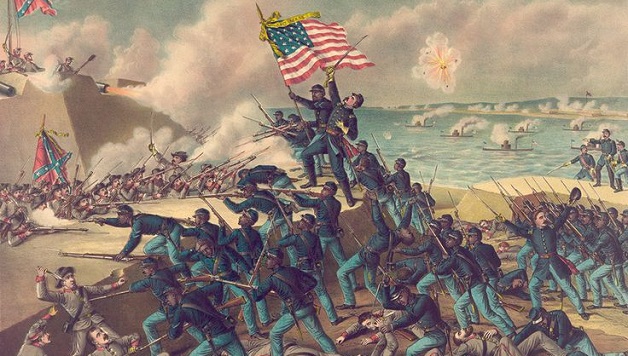También en español
One hundred and fifty years ago, on June 2, 1865, Confederate General Edmund Kirby Smith, commander of Confederate forces west of the Mississippi, signed the Union Army’s terms of surrender. This marked the final end of the Civil War which, as Patrick Ayers explains, can also truly be described as America’s Second Revolution.
The Road to the Civil War
For over 200 years, the bulk of African Americans in North America were held in bondage, families ripped apart, human beings bought and sold, brutally tortured, and treated as the “private property” of a small minority of rich white men. A whole legal framework was developed to enforce this system. The Constitution famously counted blacks as three-fifths of a human being and enshrined a Fugitive Slave Clause – protecting the “property rights” of slave owners. Racist ideology was whipped up to new heights to justify this brutal oppression.
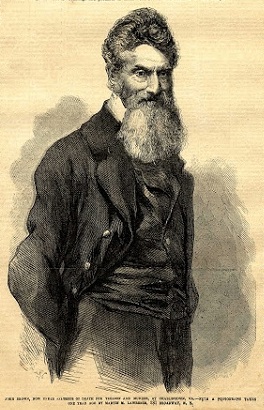
The slave owners lived in constant fear of rebellion. Nat Turner in 1831 led a major revolt and in 1859, John Brown’s attack on Harper’s Ferry – and the support he won in the North during his trial – scared the hell out of the slave owners. The abolitionists waged a moral crusade against slavery, while Harriet Tubman and others organized the Underground Railroad.
But, it was the Civil War that brought this system crashing down 150 years ago. 200,000 freed slaves joined with hundreds of thousands of small farmers, workers, immigrants, and others in the Union Army and militarily crushed the slave owners. While slavery was defeated, racism was not. 150 years after the Civil War, there are more black men ensnared in the U.S. criminal justice system than there were slaves in 1850, as Michelle Alexander, the author of The New Jim Crow, has pointed out. Today, it’s Wall Street and their capitalist system that perpetuates the racist legacy of slavery.
Revolution
The Civil War – a struggle for power between the slave-owners and the capitalists of the North – was America’s Second Revolution and resulted in a reordering of economic, political and social relations in U.S. society. The First Revolution – the struggle for independence from the British Empire – established one of the first democracies in the world. However, it ended in a compromise between the capitalist class in the North and the plantation owners in the South.
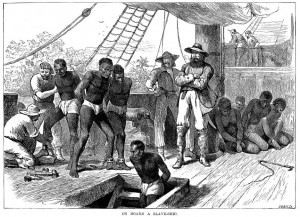
The question of slavery was not just a moral issue. It was a question of the economic and political structure of the U.S. Slavery had its own needs, and the slave owners had their own interests that were at odds with the development of capitalism. The existence and rivalry of two powerful ruling classes within the framework of a single nation state defined this period.
History is full of all kinds of twists and turns. As such, the capitalist industrial revolution – centered on the development of manufacturing and wage labor – strengthened the slave system in North America because of demand for cotton in textile manufacturing. By 1850, cotton accounted for more than 50 percent of all U.S. exports. The dominance of cotton gave the slave plantation owners enormous power, just as the dominance of finance capital gives Wall Street a dominant power in U.S. politics today.
But by 1845, capitalism in the North had outstripped the South while the plantation system was reaching its own internal limits. Cotton could not grow everywhere, and the methods of growing it quickly exhausted the soil, requiring a constant search for new lands. Meanwhile, the price of slaves and land became more expensive making the landlords more dependent on debts with northern banks.
 The slave owners were not passive in the face of the crisis facing their system and their power. They exhausted every possible avenue for overcoming the limits of the slave plantation system. They agitated for new slave states and to reopen the slave trade, and they waged wars. Increasingly, the slave owners used their power over the political system – particularly their control of the Senate whose structure, with two members from each state, favored the less populous South – to ram through policies narrowly designed to protect their system. This set them on a collision course with millions in the North, ultimately making it absolutely clear that a revolutionary overturn of society was needed.
The slave owners were not passive in the face of the crisis facing their system and their power. They exhausted every possible avenue for overcoming the limits of the slave plantation system. They agitated for new slave states and to reopen the slave trade, and they waged wars. Increasingly, the slave owners used their power over the political system – particularly their control of the Senate whose structure, with two members from each state, favored the less populous South – to ram through policies narrowly designed to protect their system. This set them on a collision course with millions in the North, ultimately making it absolutely clear that a revolutionary overturn of society was needed.
Political Revolution
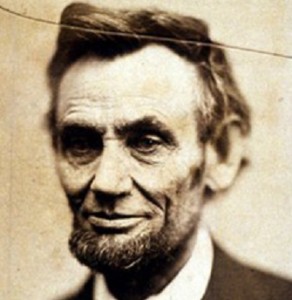
The election of Abraham Lincoln as president in 1860 was the first act of this revolution. The Republican Party was a “third party.” Between 1800-1860 the slave-owners dominated U.S. politics through their own two party system made up of the Whigs and the Democratic Party. Through this two-party system, the slave owners dominated every government institution including Congress, the White House, the Supreme Court, the military, and foreign diplomacy. The Whig Party was considered the “lesser evil” by progressives, while the Democrats, contrary to popular mythology, were set up as the main party of the slave owners.
This two-party system began to crack in the 1850s. The population of the North rapidly outpaced the South between 1800-1860, changing the balance of forces in society. Small farmers made up the majority of the new population and they wanted land for small farming, not rich slave plantations. One of the key issues that came to the fore was the enormous power a small minority – the rich slave owners – wielded in U.S. politics and society. The slave owners were increasingly seen as a threat to the democratic gains of 1776.
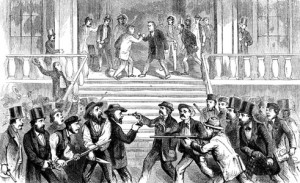
The key question that sharpened divisions between the ruling classes of the North and South was: how much land for slavery? The Missouri compromise of 1820 had limited slavery to lands beneath the 36th parallel. In 1854, the Democrats repealed the Missouri compromise, opening up Kansas and Nebraska to slavery and creating outrage in the North. The conflict spilled outside legislative channels and into the fields and towns of Kansas, where pro-slavery and anti-slavery forces fought open battles. “Bleeding Kansas” led to the almost overnight creation of the Republican Party which won sweeping congressional election victories in the North in 1856, annihilating the “lesser evil” Whig Party, and finally giving a powerful tool to all those who wanted to break the power of the slave-owners.
Revolutionary War
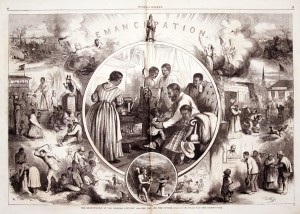
The second act of Revolution was the military struggle to put down the slave-owners revolt against the Republican Party government after Lincoln’s election in November 1860. With Lincoln’s Emancipation Proclamation, issued as an executive order out of military necessity on January 1, 1863, the war became a revolutionary war against the slave system itself. Emancipation was the biggest attack on “private property” in history and undermined the whole basis of the slave-owners’ power.
It should be stressed that Lincoln’s first priority at the start of the war was not dismantling the slave system but rather ending the secession of the Southern states and preserving the Union. But the logic of the revolution was that the social system which underlay the South’s power had to be destroyed. This necessarily meant freeing the slaves. It was also the case that the North needed to bring African Americans directly into the military effort on the basis of fighting for their freedom in order to turn the tide of the war.
Lincoln represented a more radical section of the Northern capitalists, and showed real determination to put down the slave-owners’ rebellion unlike another section of the ruling elite who were willing to make even further rotten compromises. It’s true that without the struggle of the masses, the initiative of the slaves, small farmers, and workers themselves, then Lincoln would not have been in a position to lead. But, Lincoln showed outstanding leadership and was not afraid to take decisive measures even if it meant concentrating more power in his hands.
He used a loose interpretation of the Constitution to go over the heads of Congress and raise an army of hundreds of thousands. He suspended habeas corpus, and had suspected traitors in the Maryland legislature arrested and held without charges. Lincoln hesitated on the issue of slavery for fear of losing support in Unionist slave states, particularly the strategically important state of Kentucky. But events changed Lincoln’s outlook.
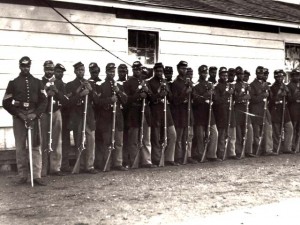
Consulting with Frederick Douglass, Lincoln opened the doors of the Union Army to the increasing number of slaves who were fleeing the South and wanted to join the Army to fight for their social liberation. In early 1864, exhaustion and years of grinding conflict led many to believe Lincoln would lose the Presidential election to the Democrats who were willing to make concessions on slavery. Lincoln rejected concessions on emancipation at this time arguing it would be a victory for the South and a betrayal of the black soldiers who fought heroically for the Union.
Victory in Atlanta in September 1864 changed the mood of the North and signaled that the Union’s full economic, military and social advantage was coming to bear. Lincoln was re-elected in November 1864. The Confederacy was forced to accept defeat in April 1865 and the final surrender came in June. Although racism remained, slavery was smashed.
Consolidation of Capitalism
At the same time, the victory of the Union consolidated the power of the capitalist class in the North. A controversial outcome in the 1876 election lead to a rotten compromise between the elites of the North and South. In exchange for withdrawing Northern troops whose presence underpinned Reconstruction (see box), the Democrats conceded the Presidency. This closed the period of Radical Reconstruction and opened a period of counter-revolution, where once again racism was whipped up to establish a new form of social control and special oppression of black people – Jim Crow.
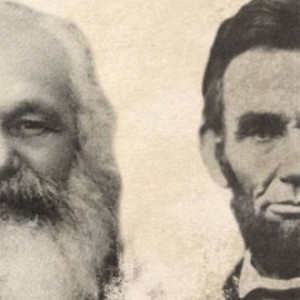
Karl Marx first developed the idea that the historic role of the working class was to wage a powerful struggle against capitalism and for the creation of a socialist society. However, in the U.S. Civil War, Karl Marx supported President Lincoln, the Republican Party and the Union Army because, as he saw it, the most important task of working people in the U.S. was to defeat slavery in order to create more favorable conditions for the united struggle of all working people. In Capital he stated, “Labor in the white skin can never free itself as long as labor in the black skin is branded.”
Jim Crow complicated the task of uniting the working class, but its destruction was another historic step forward. Today, we still need to struggle against racism as capitalism has completely failed to overcome the legacy of the racist slave system. We need to fight tooth and nail against the new form of social control and racial oppression directed at African Americans: mass incarceration, disproportionate poverty, and militarized policing of black communities.
Today it is the multiracial working class which has the potential power to defeat racism and end the rule of Wall Street over our lives. Black workers have been to the forefront of the Fight for 15 which is pointing the way toward rebuilding a fighting labor movement. The Fight for 15 is now beginning to build more direct links with the Black Lives Matter movement of the youth fighting police brutality.
As in the 1850s our political system is dominated by two parties which, while different in important ways, both defend the rule of corporate America and Wall Street. The example of the radical Republican Party’s victory under Lincoln in 1860 shows us that when the conditions are right a mass political force representing the interests of the working people can break through and transform the completely dysfunctional political system. The history of America’s Second Revolution is essential study for those who would prepare the Third, socialist transformation of society where the legacy of slavery can be finally buried once and for all.
The Radical Legacy of the U.S. Civil War
When the Confederacy surrendered in 1865 – completely out-matched by the power of Northern capitalism and the radicalized small farmers, workers, and freed slaves that fought – one of the most revolutionary chapters of U.S. history immediately opened up: the period of Radical Reconstruction.
The essence of this period, was the awakening and coming together of the most oppressed layers of society around their common interests. Blacks were at the forefront of these struggles in the South, fighting for democratic rights and electing radical legislatures. Significantly, both black and white sharecroppers in the South joined together to fight for land reform. Racism was employed by the ruling class of the South to divide and hold back these struggles.
Internationally
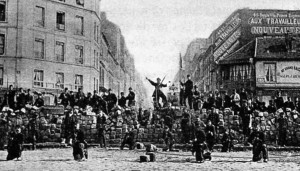
At the same time, the defeat of the slave owners was celebrated internationally. Most of Europe was under the thumb of monarchies and dictatorships, while much of Asia, and Africa were under colonial rule by European powers. The young republic in North America, born out of struggle against the British Empire, stood out as a beacon of hope for a different kind of society, one that upheld democratic ideals, in spite of its limitations.
The victory over the slave-owners gave a mighty impulse to democratic revolutionary movements internationally. In the course of the war, the International Workingmen’s Association (First International) was established – the first attempt by the working class internationally to build an international organization to coordinate a united struggle across national borders. Just six years after the end of the Civil War, workers in France formed the Paris Commune, the first attempt ever by the working class to take state power.
In the U.S., The IWA grew to more than 50 branches and was a key force in helping spread agitation for the 8 hour day. The suffragette movement also grew out of this period.


